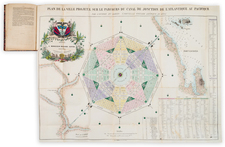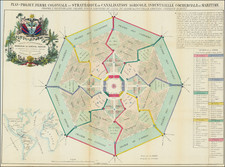Search
Athanase Airiau, a member of the Paris "Society for a Canal Interocéanique," made a fascinating contribution in the mid-19th century towards the conceptualization of a canal through the Panamanian isthmus.
In 1860, Airiau articulated a vision for France's leadership in this monumental engineering endeavor, asserting, "It is to France that belongs the initiative to establish a canal." He further justified this claim by appealing to the national character of France, suggesting that such an exploration would align with "the aptitudes and penchants of our nation, to the allure of our generous policies, our humanitarian tendencies around which one can rally, yet which are no less eminently honorable."
Airiau also addressed the geopolitical implications of the canal in a letter to the French government, emphasizing the need to counteract American expansionism as articulated through the Monroe Doctrine. He argued for a French colonial presence in Panama to "preserve South America from the invasion of the Monroe Doctrine which dreams despotically of Latin submission to its profit, to the detriment of our Old Europe."
His book on the French interoceanic canal route, subtitled "canalization for colonization," included detailed maps and diagrams to illustrate the proposed canal route. One main map showed a direct, sea-level canal from Caledonia on the Caribbean coast to just north of the Lara River, indicating a passage through the San Blas Mountains of the continental divide. The publication included profile diagrams comparing this route favorably against other proposed routes in Panama, Nicaragua, and Mexico, highlighting its feasibility and advantages.
Airiau's maps also featured a new city, marked by a maroon octagon along the canal route, indicating plans for urban development as part of the canal project. This depiction, alongside views of sailing vessels navigating the proposed canal, underscored the comprehensive nature of Airiau's vision for the canal's role in global commerce and regional development.
Airiau's concepts have drawn relatively little note in modern times, although in one case, the author's opinions were quite colorful. Omar Jaén Suárez comments:
In 1860, French merchant Athanase Airiau published a book with an absolutely delusional drawing. A geometrical utopia laid out as a large octagonal city in the center of the Chucunaque basin, transformed into an immense French-style garden with livestock and cut in two, exactly in its center, by a canal at sea level that would join the Atlantic and the Pacific in a straight line, crossing the San Blas mountain range to the north.
While the project never came to fruition, its grand illustrations are indeed remarkable.


